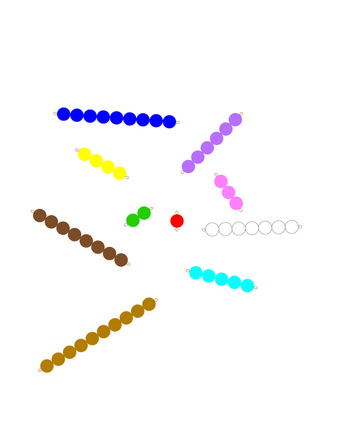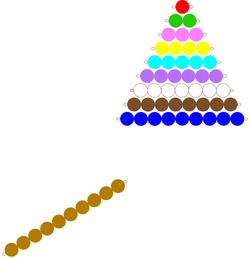| SNAP-Scaffolding for Numerical Synapses |
Acknowledgements
I would especially like to thank Michael S. Schneider, author of A Beginner’s Guide to Constructing the Universe: The Mathematical Archetypes of Nature, Art, and Science: A Voyage From 1 To 10. Michael’s work gave me a new interest in the relationships among numbers, geometric shapes, and patterns, and compelled me to design a guide to help others bring a sense of wonder and curiosity to young children.
I acknowledge and thank the wider Montessori community. Of the many facets that distinguish Montessori from other educational approaches, the awareness of each child’s unique capabilities and each child’s innate ability to absorb his or her environment is prominent. As children play, explore, and interact with their environment, they learn. It stands to reason that the degree to which an environment is thoughtfully and purposefully prepared will give a child a sound foundation from which to grow and help to determine his or her love of learning.
I acknowledge and thank the wider Montessori community. Of the many facets that distinguish Montessori from other educational approaches, the awareness of each child’s unique capabilities and each child’s innate ability to absorb his or her environment is prominent. As children play, explore, and interact with their environment, they learn. It stands to reason that the degree to which an environment is thoughtfully and purposefully prepared will give a child a sound foundation from which to grow and help to determine his or her love of learning.

Of all the educational materials that Maria Montessori designed, some of the most compelling are her counting beads, bead bars, squares, cubes, and chains. The Colored Bead Stair beads (opposite), along with Numerals, help the child associate quantity and symbol. Linear counting and the concepts of units are also reinforced when children work with the Colored Bead Stair beads. Children are drawn to the beauty of the beads and wire holding the units together. They are asked to relate the bead bars to other one-to-ten math exercises in the classroom, and they use them for simple addition.
There are esteemed organizations that hold us to the highest, authentic Montessori standards, and then there are young moms and dads making Montessori adaptations at home while learning on the fly about various parenting styles. There are private schools blessed with adequate funds and abilities for raising resources, and there are those that endeavor—sometimes within austere budgets—to bring Montessori education to children in parts of the world that are remote and impoverished.
Writers, speakers, and video producers engage in workshops and conferences in order to elevate the awareness of Montessori philosophies and methods.
Researchers study brain development and how the brain learns. They compare skills of children in classic Montessori programs with those of children in supplemented Montessori schools and, also, with those children in conventional schools.
Others build bridges and look to exchange best practices with other holistic, child-centered programs; still others work to bring Montessori into the public sector.
Last, but not least, I acknowledge and thank those teachers working daily in the classroom, balancing their own educated and discerning expectations with those of school administrators and those of parents.
Writers, speakers, and video producers engage in workshops and conferences in order to elevate the awareness of Montessori philosophies and methods.
Researchers study brain development and how the brain learns. They compare skills of children in classic Montessori programs with those of children in supplemented Montessori schools and, also, with those children in conventional schools.
Others build bridges and look to exchange best practices with other holistic, child-centered programs; still others work to bring Montessori into the public sector.
Last, but not least, I acknowledge and thank those teachers working daily in the classroom, balancing their own educated and discerning expectations with those of school administrators and those of parents.
